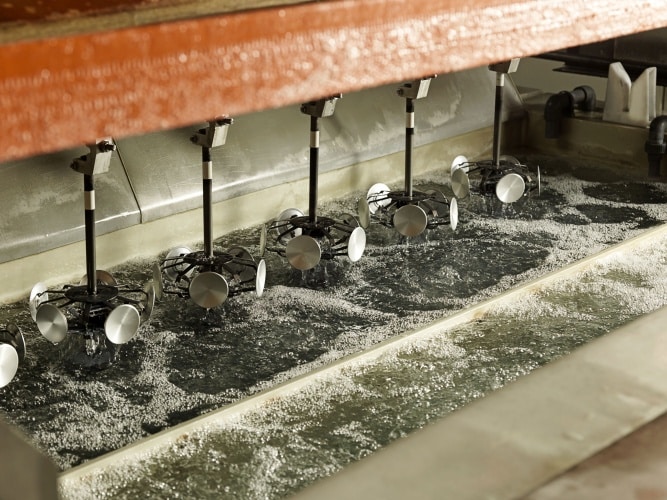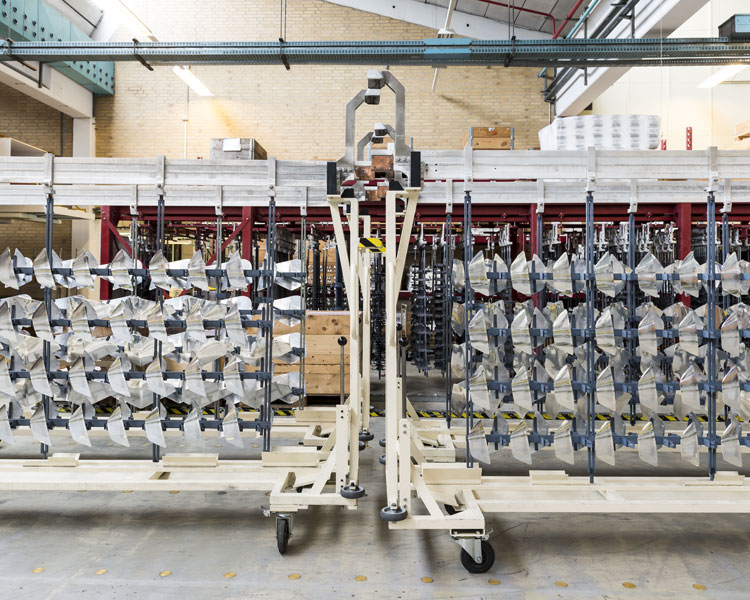Bang & Olufsen over the years, has become famous for not only its stylish products but for their ‘feel’ and looks. Many products produced nowadays are of a hard-wearing aluminium; aluminium which has gone through the process of anodisation in order to harden the aluminium surface considerably and make it highly resistant to physical damage such as scratching. As the products’ mirror finish and smooth surface without protrusions are easily cleaned, their beautiful appearance will be the same for many years.


Anodised aluminium has been a Bang & Olufsen hallmark for many years, but as the mirror-finished anodisation process is one of the most demanding metallurgic surface processes, Bang & Olufsen is the only manufacturer of audio and video equipment to use it. Anodising aluminium successfully combines science with nature in order to create one of nature’s best metal finishes.
The process is electrochemical which thickens and toughens the naturally-occurring protective oxide. The resulting finish, depending on the process, is the second hardest substance known to man, second only to diamond. The anodic coating is part of the metal, but has a porous structure which allows secondary infusions, (i.e. organic and inorganic colouring, lubricity aids, etc.).
While the chemical anodising process remains the same for all applications, the mechanical methods vary according to the two physical types and shapes of metals used.
Batch Anodising involves racking parts and immersing them in a series of treatment tanks. In wider industry, extrusions, sheets or bent metal parts, castings, cookware, cosmetic cases, flashlight bodies and machined aluminium parts are just a few of the items that are batch anodised.
Appearance options and quality are improved through the use of dyes and special pre-treatment procedures. This makes the aluminium look like pewter, stainless steel, copper, brushed bronze or polished brass and can also be coloured with brilliant blues, greens, reds and many varieties of metallic gold and silver (see, for example, the range of BeoLab 4000 finishes). The unique dielectric properties of an anodised finish offer many opportunities for electrical applications.
The surface of the aluminium itself is toughened and hardened to a degree unmatched by any other process or material. The coating is 30 percent thicker than the metal it replaces, since the volume of oxide produced is greater than that of the metal replaced. The resulting anodic coating is porous, allowing relatively easy colouring and sealing.
Hard Anodising is a term used to describe the production of anodic coatings with film hardness or abrasion as their primary characteristic. They are usually thick by normal anodising standards (greater than 25 microns) and they are produced using special anodising conditions (very low temperature, high current density, special electrolytes). They find application in the engineering industry for components which require a very wear resistant surface such as piston, cylinders and hydraulic gear. They are often left unsealed, but may be impregnated with materials such as waxes or silicone fluids to give particular surface properties.